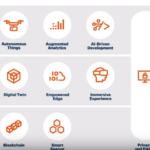Tags Digital Banking
COVID-19 has spurred a fundamental shift in consumer behaviors and expectations. This shift is also impacting the way in which financial institutions interact with consumers as well as the way they are likely to be viewed by consumers in the long term. With that in mind, let’s take a look at 16 effective ways financial institutions can engage consumers going forward:
- Keep digital channels open – keeping digital channels open and keeping consumers informed of the latest information they need to know is key, especially in times of crisis.
- Build a safety-first, omni-channel reach-out plan – financial institutions need to take care to keep consumers up-to-date about safety protocols, both physical (e.g. sanitizing requirements at branch offices) and digital (e.g. new phishing attempts).
- Send consumers surveys to get early feedback – it is also better to reach out proactively to identify and resolve potential issues before they become larger problems.
- Design relevant and helpful customer journeys – financial institutions need to be prepared to meet consumers wherever they are, even messaging apps. To ensure they are able to do so, they should develop consumer journey mapping tools.
- Use personalized banners and sidebars – keeping consumers updated on the most important and recent developments is important, otherwise your site will feel out of touch. It’s also important to display personalized banners consumers are likely to find relevant to their specific situations.
- Leverage overlays for improved engagement – dynamic overlays easily catch the attention of consumers, especially during crisis periods.
- Use text banners for promotions and location-based announcements – small-sized text banners can quickly and simply communicate important things consumers need to know such as branch re-openings, emergency customer care numbers, etc.
- Give tailored advice for the vulnerable – using customer data platforms to gather 360-degree information on customers and syncing it with a CRM system can allow for (potentially) vulnerable customers to be identified for targeted assistance.
- Design smart banners to increase mobile app downloads – most financial institutions have apps that allow consumers to do most things they go to a branch location for. Smart banners to directly link to where a financial institution’s app can be downloaded provide increased convenience for both consumers and branch employees.
- Disincentivize branch visits – it is especially important with the ongoing COVID-19 situation to encourage consumers to stay home and use online banking services as much as possible. To encourage this, financial institutions should leverage websites to drive consumers toward remote channels.
- Deliver digital banking education – with an increased emphasis on the importance of digital banking, now is the best time for financial institutions to make digital banking education resources more prominent.
- Create COVID-19-sensitive products and services – it is important that financial institutions respond to the realities of the current world. For the COVID-19 crisis, they should consider offering such things as increases in online transaction limits, payment holidays and waiving minimum balance charges.
- Leverage the power of storytelling – using highly-engaging and personalized stories helps financial institutions reach and sell consumers about the benefits of a product or service.
- Bring back former customers with tailored product recommendations – while it is important to not take advantage of a crisis to gain sales, it is still important to reach out to consumers (including former customers) about products and services that might be of real benefit to them.
- Lead community initiatives – there are already great examples (e.g. in China) of how financial institutions can lead community outreach efforts to go beyond sales and profit and provide tangible benefits to consumers.
- Keep employees safe and informed – while keeping in touch with consumers is important, it is equally important to not forget about employees. They need to be kept up-to-date on any changes as well as provided with appropriate working tools and infrastructure to perform their jobs safely.
 BFC Bulletins Monthly News Digest
BFC Bulletins Monthly News Digest




